Publications
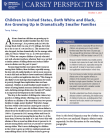
October 3, 2017
African American children are growing up in dramatically smaller families than they were 50 years ago.1 At a postwar peak in 1960, the average black child was one of 6.53 siblings, but today he or she is one of 3.18 (see Box 1). This measure has also dropped, but less dramatically, for the average white child, for whom “sibsize” was 4.1 in 1960 and today is 2.93.2 When we compare children of…
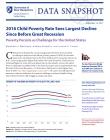
September 14, 2017
Child poverty declined by 1.2 percentage points between 2015 and 2016, according to analyses of the official poverty measure (OPM) in the latest American Community Survey. By 2016, child poverty across the nation was still 1.5 percentage points higher than before the Great Recession.
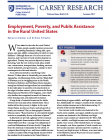
September 7, 2017
When asked to describe the rural United States, people usually mention serene and sprawling farmlands, rolling hills, open spaces, and safe, idyllic communities in which to raise children.1 Although there are a lot of acres in rural America, just 6 percent of rural workers depend on agriculture. Twenty-two percent depend on manufacturing,2 and the rest work in retail, sales, health care,…
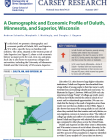
August 1, 2017
In this brief, we present a demographic and economic profile of Duluth, MN, and Superior, WI, with a specific focus on families with children. The cities, situated at the western point of Lake Superior (see Figure 1), share a rich economic history as major ports for coal, iron ore, and grain. Each city is also home to numerous colleges and universities, including the University of Minnesota-…
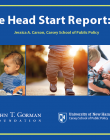
July 25, 2017
Founded in 1965, Head Start is designed to promote “school readiness of children under 5 from low-income families through education, health, social, and other services.”1 Created in 1994, Early Head Start focuses specifically on the youngest children—those under age 3, and pregnant women—and provides “early, continuous, intensive, and comprehensive child development and family support services to…
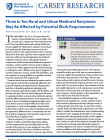
July 6, 2017
The Affordable Care Act in 2010 gave states the option to expand Medicaid access to adults with incomes up to 138 percent of the federal poverty level. Thus more able-bodied and working adults have become eligible for Medicaid. In addition, several states have petitioned the federal government to have the option to enforce work requirements for those receiving Medicaid in their state.1 Specific…
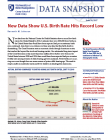
June 30, 2017
New data from the National Center for Health Statistics show a record low birth rate in the United States. In 2016, I estimate there were 600,000 fewer births in the United States than would have been expected had pre-recessionary birth rates continued. And, there is no evidence in these new data that this birth dearth is diminishing.
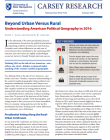
June 27, 2017
In the aftermath of the 2016 presidential election, commentators focused on the political polarization separating residents of urban and rural America. Certainly rural–urban differences are only one of several factors that contributed to the surprising 2016 outcome, but rural voters are rightly acknowledged as one key factor in Donald Trump’s electoral success. Yet, defining 2016 as the tale of…
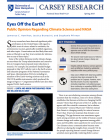
June 13, 2017
Survey researchers have observed significant political divisions in the United States with regard to public trust of science related to evolution, the environment, vaccines, genetically modified organisms, and other topics. Conservatives are less likely than moderates or liberals to say they trust scientists for information on any of these topics.1 Some of the widest divisions involve climate…
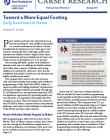
May 23, 2017
Policy makers and advocates nationwide recognize that funding for early childhood education is a crucial investment in the future. Critical foundational development occurs before age 5, and research consistently shows that high-quality early education for children leads to higher future educational attainment and lower likelihood of crime,1 and yields a return on investment of 7 to 13 percent.2…
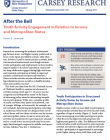
May 16, 2017
Research on narrowing the academic achievement gap between lower- and higher-income youth tends to focus on the inputs provided by schools. Little attention, however, is paid to extracurricular activities, both structured and unstructured, even though extracurricular participation and employment can have positive impacts similar to in-school experiences. Such activities keep adolescents engaged…
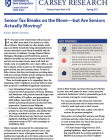
May 9, 2017
Every state in the United States with an income tax offers some kind of tax break to its older citizens. These breaks are often sizable, resulting in an elderly household owing substantially less in income taxes than a non-elderly household with the same income. In Alabama, Georgia, Hawaii, Illinois, Michigan, Mississippi, and Pennsylvania, married elderly households can have incomes well over $…
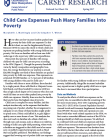
May 2, 2017
UPDATE: This fact sheet was updated on October 24, 2024, to reflect analytics corrections to some estimates. In this fact sheet, we use the Supplemental Poverty Measure (SPM) to assess the extent to which child care expenses are pushing families with young children into poverty.
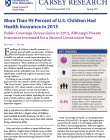
April 25, 2017
Enrolling all children in health insurance is a primary goal of health care advocates. Children who have health insurance have better access to health care and, as a result, experience gains in a variety of well-being measures, including health and school attainment.1 Most children are covered by private insurance,2 but public insurance available through the Children’s Health Insurance Program (…
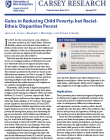
April 18, 2017
In 2015, for the second year in a row, child poverty rates declined in the United States. However, familiar patterns in levels and characteristics of child poverty persist: more than one in five children are poor; children of color are at disproportionate risk for poverty; and rates are highest in the South and West and in rural areas and cities (Table 1). This brief uses data from the American…
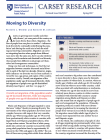
April 4, 2017
America is growing more racially and ethnically diverse,1 yet some parts of the country are far more diverse than others. Migration—the flow of people from one place to another2—influences local diversity by continually redistributing the population3 and altering the racial mix in both the sending and receiving communities. Migration can serve an integrating function when people from different…
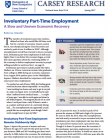
March 28, 2017
The number of involuntary part-time workers, defined as those who would like full time work but for a variety of economic reasons cannot find it, rose sharply during the Great Recession and reached a peak of over 9 million in 2010.1 Although unemployment overall has returned to its pre-recession level, involuntary part-time employment is still much higher than it was before the recession began, a…
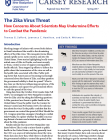
March 21, 2017
Shocking images of infants with severe birth defects in Brazil introduced the world to the devastating effects of the Zika virus. This mosquito-borne illness spread rapidly across Latin America and into the United States. News stories highlighting locally transmitted cases of Zika in Florida, and most recently in Texas, created a sense of urgency among public health officials. They stepped up…
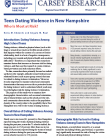
March 14, 2017
Dating Violence Among High School Teens Dating violence, defined as physical abuse (such as hitting) or sexual abuse (such as forcible sexual activity) that happens within the context of a current or former relationship, leads to a host of negative consequences, including poor mental and physical health and academic difficulties.1 Therefore, it is important that researchers examine factors that…
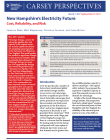
March 7, 2017
May 2017 update PointLogic Energy, a source for natural gas pipeline flow and capacity in the original report, has recently updated its models for calculating natural gas flow in the Tennessee Gas Pipeline in New England. This model update has resulted in significant changes to their previous estimates. Most importantly, data obtained from PointLogic Energy in December 2016 supported the finding…
